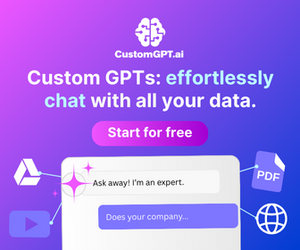-
Table of Contents
AI Learning Curve for Non-Tech Users

AI learning curve for non-tech users can feel overwhelming, but it doesn’t have to be. With the right approach, anyone can master artificial intelligence tools and integrate them into their daily lives. This article will guide you through practical steps, real-world examples, and actionable advice to help you overcome the challenges and embrace the benefits of AI.
Table of Contents
- Understanding the Challenge
- Breaking Down the Basics
- Practical Steps to Get Started
- Common Mistakes and How to Avoid Them
- Real-World Examples of Success
- Tools and Resources to Simplify the Process
- Building Confidence with AI
- Conclusion
Understanding the Challenge
For many non-tech users, the AI learning curve can seem steep. The jargon, complexity, and rapid advancements in the field often create a barrier to entry. However, understanding why this challenge exists is the first step toward overcoming it. AI tools are designed to solve problems, but they require a basic level of familiarity to use effectively.
For instance, a small business owner might struggle to implement AI-driven customer service tools because they lack technical expertise. Similarly, a teacher might find it difficult to integrate AI-powered educational platforms into their curriculum. These scenarios highlight the need for accessible resources and guidance tailored to non-tech users.
Why Non-Tech Users Struggle
- Lack of familiarity with technical terms and concepts.
- Fear of making mistakes or breaking systems.
- Limited time to invest in learning new technologies.
- Overwhelmed by the sheer number of AI tools available.
Breaking Down the Basics
To tackle the AI learning curve, start by simplifying the basics. Artificial intelligence is essentially about teaching machines to perform tasks that typically require human intelligence. This includes activities like recognizing patterns, making decisions, and understanding language.
For example, AI-powered chatbots can answer customer queries by analyzing text and providing relevant responses. Similarly, recommendation systems on platforms like Netflix use AI to suggest content based on user preferences. By understanding these fundamental concepts, non-tech users can begin to see how AI applies to their own lives.
Key Concepts to Know
- Machine Learning: A subset of AI that focuses on training algorithms to learn from data.
- Natural Language Processing (NLP): Enables machines to understand and respond to human language.
- Automation: Using AI to perform repetitive tasks without human intervention.
Practical Steps to Get Started
Embarking on the AI learning curve doesn’t require a degree in computer science. Start by identifying specific tasks or problems you want AI to solve. For instance, if you’re a marketer, you might explore AI tools for content creation or data analysis.
Next, experiment with user-friendly platforms like ChatGPT or Canva’s AI features. These tools are designed with non-tech users in mind, offering intuitive interfaces and step-by-step guidance. Additionally, consider taking online courses or attending webinars to build your knowledge gradually.
Steps to Follow
- Identify your goals and how AI can help achieve them.
- Start with simple, user-friendly tools.
- Allocate time each week to learn and practice.
- Join communities or forums for support and advice.
Common Mistakes and How to Avoid Them
One of the biggest mistakes non-tech users make is expecting immediate mastery. The AI learning curve is gradual, and patience is key. Another common error is relying too heavily on AI without understanding its limitations. For example, while AI can generate content, it may not always produce accurate or high-quality results.
To avoid these pitfalls, set realistic expectations and focus on incremental progress. Additionally, always review and verify AI-generated outputs to ensure they meet your standards. By doing so, you’ll build a solid foundation and avoid frustration.
Mistakes to Watch Out For
- Expecting instant results without putting in the effort.
- Overlooking the importance of understanding AI’s limitations.
- Ignoring the need for ongoing learning and adaptation.
Real-World Examples of Success
Many non-tech users have successfully navigated the AI learning curve and reaped significant benefits. For instance, a freelance graphic designer used AI tools like Adobe Sensei to streamline their workflow and enhance creativity. Similarly, a small business owner implemented AI-driven inventory management to reduce costs and improve efficiency.
These examples demonstrate that with the right approach, anyone can harness the power of AI. By learning from others’ experiences, you can gain inspiration and practical insights to apply in your own journey.
Case Studies
- A teacher using AI



Leave a Reply